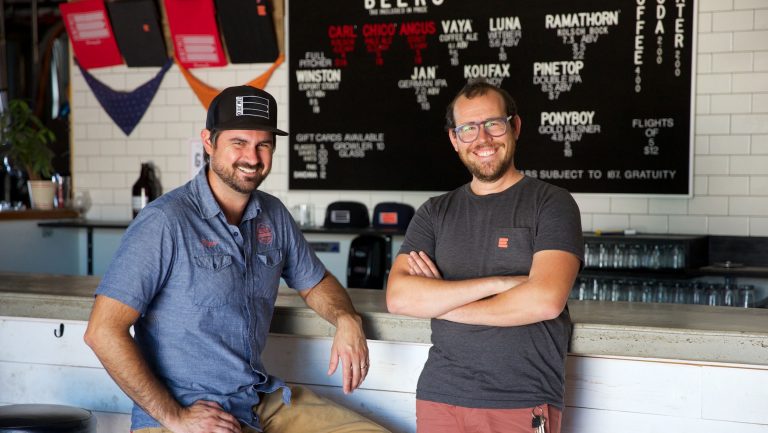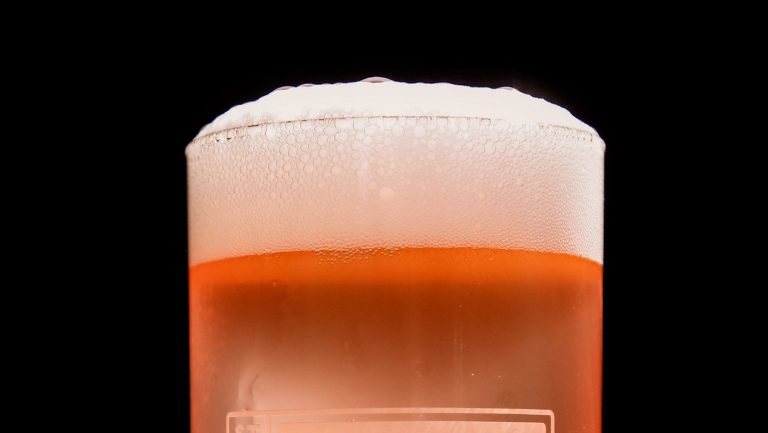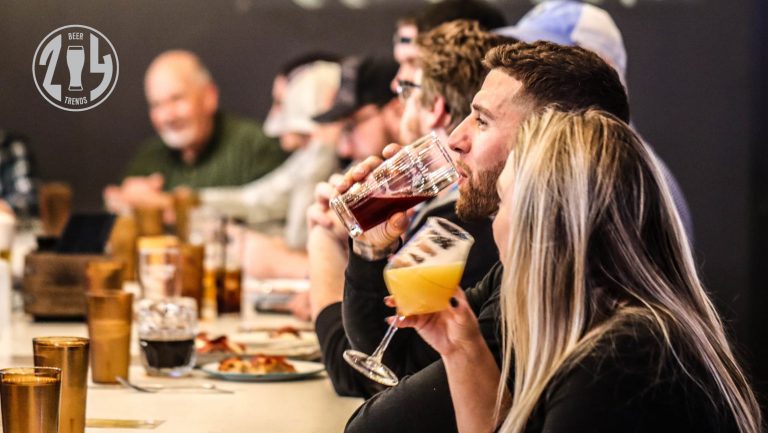Fonta Flora could be voted the “least likely” brewer to produce a hard seltzer. The brewery, which operates several locations in western North Carolina, specializes in beers sown from wild yeast and such Appalachian produce as carrots, foraged dandelions, and heirloom corn. Fonta Flora’s ethos seems the antithesis of the hard seltzer category, which is dominated by massive brands fermenting malt and sugar.
Yet one day, Todd Boera, Fonta Flora’s head of brewing operations, was at his business partner’s house, where the fridge contained White Claw for his gluten-free wife. He started to think about whether the brewery could make something better.
Using fresh fruit and herbs was “an opportunity to make a very different product,” Boera says. Fonta Flora’s Topsy hard seltzers, launched in early 2019, feature North Carolina apples, hand-zested lemons, and black tea grown in Charleston, South Carolina. Incorporating the same ingredients the brewery uses for its beer, Fonta Flora creates hard seltzer according to the founders’ “moral compass” with distinct tastes and sense of place.

Don’t miss the latest drinks industry news and insights. Sign up for our award-winning newsletters and get insider intel, resources, and trends delivered to your inbox every week.
“When you think about it, it’s really the same reason why homebrewers started homebrewing,” Boera says. “They were unhappy with what was commercially available.”
Small-Scale Seltzer Innovation
Off-premise hard seltzer sales have accelerated during the pandemic, and analytic firm Cowen predicts that hard seltzer could account for 10 percent of the beer category’s dollar sales this summer. Many craft breweries have had to make a decision: Stay in their beer lanes, or buy some cane sugar and get in the seltzer game? Increasingly, small and regional breweries are entering the hard seltzer category, producing a crafty counterpoint to big brands such as Truly and White Claw.

The newer participants have discovered it’s a wide-open field for experimentation. In a category unconstrained by style guidelines, craft breweries can explore a range of flavors, aromas, and ingredients. Dry Dock Brewing, in Aurora, Colorado, makes the Mysters Hard Seltzer in flavors inspired by its beers, including its flagship Apricot Blonde. In March, Saranac Brewing Company, in Utica, New York, began distributing Saranac Green Tea Spiked Seltzer, which is infused with green tea leaves. In May, Wachusett Brewing, in Westminster, Massachusetts, debuted the lemonade-inspired Country Hard Seltzer, while SweetWater Brewing, in Atlanta, Georgia, offers the Hydroponics line of cannabis-inspired hard seltzer, which mimics the scents of certain strains with plant-based terpenes. The Mill House Brewing Company in Poughkeepsie, New York, is offering lime and raspberry hard seltzers at its taproom; each are lightly tinted and cloudy in appearance.
“Seltzer itself actually offers a pretty interesting blank canvas,” says Collin Castore, a cofounder of Seventh Son Brewing, in Columbus, Ohio. Instead of using extracts or flavorings, the brewery infuses its richly colored Kitty Paw “craft hard seltzer” with fruit purees such as raspberry. “This is sort of the only way we were going to make the stuff,” says head brewer Colin Vent, who also uses fruit purees in his sour beers.
Kitty Paw serves as a sister brand to Seventh Son, whose name is discreetly placed on the distinct cans, which are sold around Columbus. The message is clear: Seventh Son is beer, while Kitty Paw, as a seltzer, is the gluten-free alternative. “We are seeing it cut across some pretty broad demographics,” Castore says, noting that the seltzer is enticing health-conscious and new-to-craft consumers. “Kitty Paw’s simplicity is part of its draw,” he adds.

Recruiting New Consumers
Creating something for non-beer drinkers had long been a goal for St. Elmo Brewing, in Austin, Texas. The brewery crafts a wide range of beer, from smoky lagers to coffee-infused cream ales, IPAs, coconut imperial stout, and even malt liquor. Despite this diversity, when a big group visits the brewery’s taproom, “there’s always one or two people who don’t want to drink beer,” says cofounder and head brewer Bryan Winslow. “They either sit there quietly or get their friends to leave.”
Because St. Elmo is not licensed to produce wine or cider, it began making a sugar-based hard seltzer, Ripple, which customers can flavor with the taproom’s house-made syrups, including cherry-lime and lavender-lemon. With the taproom closed during the coronavirus pandemic, St. Elmo started packaging the Tropical Ripple variant in four-packs of 16-ounce cans, offering it as a to-go option from the taproom. “Not everybody has to like beer,” Winslow says.
As hard seltzer matures, evolving from upstart to institution, expect more craft breweries to make a flavorful mark in the category. It’s in their DNA to disrupt the status quo. “There are accounts who believe [hard seltzer] will never move past the few main players,” says Seventh Son’s Castore, “but what a boring world it would be if brewers had just given up at Budweiser and Miller.”

Dispatch
Sign up for our award-winning newsletter
Don’t miss the latest drinks industry news and insights—delivered to your inbox every week.
Contributing editor Joshua M. Bernstein is a beer, spirits, food, and travel journalist, as well as an occasional tour guide, event producer, and industry consultant. He writes for the New York Times, Men’s Journal, New York magazine, Wine Enthusiast, and Imbibe, where he’s a contributing editor in charge of beer coverage. Bernstein is also the author of five books: Brewed Awakening, The Complete Beer Course, Complete IPA, Homebrew World, and Drink Better Beer.







